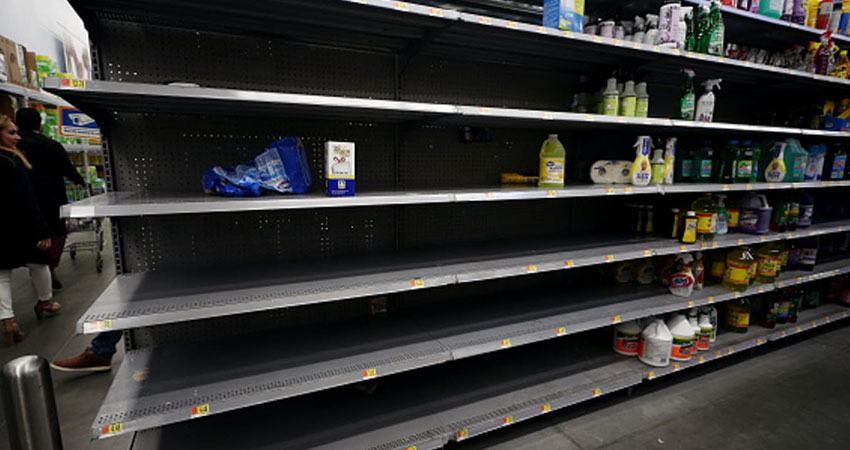Photo credit: Getty Images
Panic buying continues to cause empty shelves at grocery stores as the result of the coronavirus panic, with heavier clusters in affected states as grocery retailers are starting to ration supplies, according to the Wall Street Journal.
Also, same-day delivery providers Instacart and Postmates have expanded availability of a “leave it at my door” option as more spooked shoppers are opting for no physical contact with the delivery driver.
While Instacart initially intended the service as a convenience for moms with sleeping babies or sickness in the house, adoption has been growing as COVID-19 fears grow.
“Over the last week in particular, we observed a significant surge in consumer adoption and opt-in usage of the feature,” Instacart said in a blog post announcing the nationwide expansion after a test period. “Based on the increased demand for this new product feature, we’ve now made it available to all Instacart customers.”
“We know there are always people who, for health and other reasons, might prefer a non-contact delivery experience and we believe this will provide customers with that option,” Postmates said in its blog.
According to data from Nielsen, the coronavirus scare has fueled hand sanitizer sales growth of 313.4% for the week ended Feb. 29, while household masks were up an incredible 475%. Purell maker Gojo Industries has stepped up production by adding shifts, extending working hours and boosting capacity, the WSJ reported.
Kroger is limiting the number of sanitizing, cold and flu products to five each per order in stores and online, its CEO Rodney McMullen said on the company’s earnings call last week, based on the surge in demand.
“All of our teams, our stores, our supply chain team, our procurement folks are incredibly focused on making sure that they stay in stock on those critical items,” McMullen said.
Publix Super Markets is limiting purchases of bleach, eating utensils, facial tissue, rubbing alcohol and other sanitizing products to two per customer, the WSJ reported. Albertsons is also holding the line on sale of hand sanitizer and household cleaners, with bottled water, toilet paper, pasta, rice and some canned foods moving fastest, the paper said.
Scott DeGraeve, COO and co-founder of e-grocery technology and services provider Locai Solutions, said grocers he had spoken with said they’re seeing “big spikes” in both curbside pickup and delivery since the coronavirus scare kicked in, as well as bigger online order baskets.
“In busier stores it is adding some definite capacity constraints, and out of stocks have been more of a challenge,” DeGraeve said.
Doug Baker, vice president of industry relations for FMI, the Food Industry Association, said unfortunately the availability of e-grocery ordering has not calmed consumer panic in some quarters.
“Companies who provide hand sanitizer and wipes have put in place inventory pacing to ensure retailers don’t hoard inventory and products are distributed equitably across the industry,” Baker said. “Paper suppliers are eliminating corrugate and putting individual units directly on pallets with shrink wrap so retailers can drop and cut the plastic on the sales floor.”
Beyond the immediate surge, Baker said, is the unanswerable question of when the coronavirus panic will end, and calmer consumers will be satisfied with their stocked pantries and supply levels.
“Where will the bulk of the inventory sit within the supply chain, and will we see depressed pricing because of demand falling off the cliff?” Baker asked. “In China, brick-and-mortar sales were off approximately 80% and online sales did not capture the total loss.”
Neil Stern, an analyst with McMillonDoolittle who follows the grocery sector, said he sits on the board of a West coast grocery retailer that has seen store sales jump between 10% and 20% in recent weeks, with online sales doubling that.
“But we liken this to a snow scare, when sales go up, and then the snowstorm itself, when they go down,” Stern said. “My largest client in Korea has been hugely impacted. Brick-and-mortar has more or less been holding its own there in terms of stock levels, while ecommerce is growing as fast as they can handle it. There are capacity limits – not enough delivery slots, trucks and drivers.”

